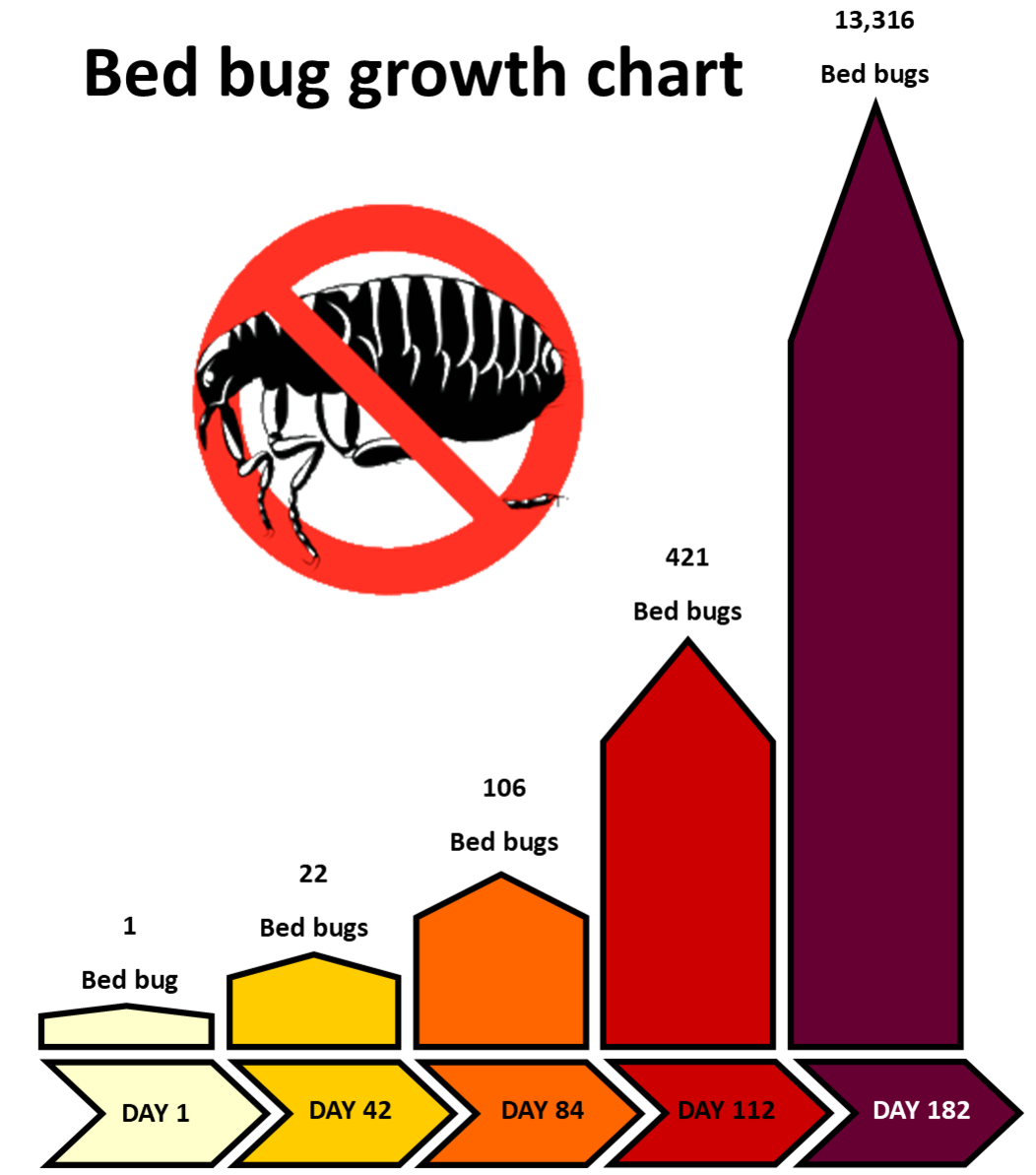Bed bug heat treatments in Maidenhead and Windsor
The use of temperature extremes has always been a recognised way of killing off insects, occasionally we will use a freezing spray to deal with wasps and hornets as temperatures in the minus Celsius range work well, at the other end of the scale we routinely use high temperatures to kill off bed bugs. All living things have a temperature at which life cannot be sustained and this is known as the thermal death point; when it comes to bed bugs the TDP is between 44 *C and 49 *C.
To eradicate bed bugs we use a dry steam generator which produces temperatures in excess of 180 *C when carrying out treatments in Maidenhead and Windsor, we also have the option of portable electric heaters which raise the entire room temperature to 60 *C for heavy infestations.
Chemical resistance and why heat treatments are so important.
There are two species of bed bug in the World and the common one; Cimex lectularius is quickly developing resistance to insecticides, this causes chemical treatments to fail so we always incorporate heat in our bed bug treatments as standard. Many pest control companies will rely purely on chemicals as a means of treating bed bugs and this is one of the causes of resistance.
If you rely on chemicals and succeed in killing around 95% of a bed bug population, the 5% left alive will develop a small amount of resistance. When the surviving stock of insects mate this resistance is passed on to their offspring, meaning that they now have an inherited resistance. This cycle goes on over several generations of bed bugs until and you have full blown resistance.
Here at Maidenhead Pest Control, we will always use heat as the basis for every bed bug treatment we deliver, pesticides are used as a secondary measure and we will use different chemicals including one which is an insect growth regulator or IGR. IGR’s don’t work as a pesticide, these function by blocking hormones in juvenile insects preventing them from reaching adulthood and sexual maturity. There will be no resistance from the use of IGR’s as the bed bugs cannot breed and die from natural aging.
Chemical resistance is a problem across other species of insects and science will undoubtedly come to the rescue, with bed bugs, researchers are looking at the use of a type of fungus that targets insects as a new weapon in the war against bed bugs.
What are bed bugs?
Bed bugs are a blood sucking parasite that is believed to have descended from another type of parasitical insect that feeds on the blood of bats. Why bed bugs evolved from bat bugs is that our ancestors started using cave systems where these bat bugs lived, and they adapted to live off us rather than the bats.
Bed bugs, hence their name, are associated with bedding however its really common to find them in places where humans merely rest and spend time; places like trains, planes, cinemas and theatres will all have the occasional infestation of bed bugs.
The reason that all these places may have bed bugs is that these insects like to feed and then climb off to hide somewhere close, bed bugs are thigmophilic; they like to squeeze into cracks in seats and beds where the sides press on their bodies. Seats on aircraft, trains and places like buses all have ideal hiding places for these insects and a constant stream of potential food in the form of new passengers or customers.
In the UK there are two strains of bed bugs; Cimex lectularius and Cimex hempiterus, and its Cimex lectularius that is giving the pest control industry nightmares with a developing resistance to pesticides.
Bed bug reproduction – how fast do they breed?
Bed bug infestations get out of control in a lightning-fast time, with an ability to reproduce quickly and the fact that each female lays around 500 eggs, bed bug infestations can double in numbers every two weeks.
Tests in research laboratories show that bed bug infestations roughly double every 13 days; just over half of the population will be nymphs or juvenile bed bugs, followed by a third of the population in the form of eggs with 12% as sexually mature adults.
One female bed bug producing her lifetime supply of eggs can lead to an infestation whose population number upwards of 13,000 within seven months. It is important that if bed bugs are detected, early professional treatment is sought to gain control of the situation; merely using chemicals that the insects are resistant to may spread the infestation into unaffected rooms.

How do I know if I have bed bugs?
There are five well known indicators of bed bugs:
Reactions to bites
Not everyone reacts to bed bug bites, but most people do, when you get bitten, bed bug bites form large red swellings that have a tendency to form a line on the skin; the reason for this is that when the insect crawls across the top of the bedding or your nightclothes they feed immediately on contact with your skin.
When a bed bug feeds, the insect punctures your skin to find a capillary and use's our blood pressure to fill its stomach. Bed bugs will feed, then pause to defecate and then feed again, this action creates lines of bites on exposed areas of skin.
Blood spots on sheets
When a bed bug feeds it is only after the solid matter that makes up the red blood cells - hemoglobin. Around 60% of our blood is made up of the liquid plasma which these insects do not want and this ‘liquid’ part of the meal is defecated straight back out.
Typically bed bugs will feed every few days or so, and this means that in the morning blood spots may appear on sheets and bedding. Blood spots will also appear where the insects like to congregate; the thigmophilic habit of bed bugs means that they hide away, but when they do this the males release a harbourage pheromone which attracts the females. We will find small groups of bed bugs and where these groups hide, blood deposits appear and form large black smears.
Discarded bed bug skins
Bed bugs are insects that don’t have a metamorphosis stage, this means that newborn bed bugs are really tiny versions of the adults and they will begin to feed on us immediately.
Juvenile bed bugs are called nymphs, and these nymphs go through seven different moults, shedding their outer skin each time before they reach adulthood.
The bed bug skins will quickly build up especially in longer running infestations and they have the markings and colouration of bed bugs which are orange / reddish colour.
Visible insects
Bed bugs aren't’t like head lice that live on us and travel around with us, bed bugs will travel some distance away from the host to hide.
Males will try to select a empty site from which to trigger the harborage pheromone and so we will find bed bugs in the web of curtains, in ceiling light fittings and up behind pictures.
Although called bed bugs, they won’t just stay there and you will start to see them moving around some distance from the bed.
Bed bugs smell
Bed bugs have an odour and when they concentrate together with the blood deposits this smell becomes detectable to us.
The smell of bed bugs is similar to that of a damp, dirty towel that’s been left sealed up in a bag for a long period of time; anyone with teenagers will be familiar with this smell as its usually one I associate with the question “Where’s my PE kit”? every Monday morning.
The bed bug heat treatment process
Bed bug treatments in Windsor and Maidenhead will have some form of heat applied; because bed bugs are developing resistance to the pesticides that we use, any treatment that relies just on a chemical application may fail and so we will always start with heat as a control method.
Our treatments have to be as thorough as possible and so before we can start we ask if you could do some pre-treatment preparation to the affected rooms. To be thorough, the treatment relies on the need to dismantle parts or all of the bed to get the steam and chemicals deep into all the cracks and crevices where the bed bugs will be hiding.
If you have a divan bed with drawers or a lift up bed with a storage trunk beneath, any items stored inside will need to be removed; this is the same for any general storage under a frame bed. There is a good chance that bed bugs maybe living in these items so remove them carefully and because bed bugs can survive for over nine months without feeding, you will need to think about what you are going to do with these items? Items that aren’t needed can be quarantined and these should be double bagged and sealed, alternatively you can try freezing robust objects like books etc as temperatures at -18* Celsius will also kill off the bed bugs.
If you have pets, arrange for them to be taken away for the day of the treatment, bed bugs can feed on cats and dogs so it may be worth giving them a flea treatment and wash any bedding on a high temperature setting. When washing bed clothes or other items a minimum of 60 degrees Celsius is required, cooler washes will not kill off bed bug eggs.
Next you will need to thoroughly vacuum the affected rooms , there are two reasons for doing this, one it removes dust which is going to be sprayed with chemicals and second, it may reduce the overall bed bug population. In case that you have picked up bed bugs when vacuuming, the cleaner will need to be emptied, take it outside of the house and seal the waste bag up. The chemicals that we use to combat bed bugs have a long lasting residual capacity and we do not want the rooms vacuumed for around six weeks after the treatment to enable these chemicals to work.
Our technicians will wear PPE for their health and safety during the chemical application and so you will need to vacate the area while the treatment is being carried out and afterwards throughout the drying period. Severe bed bug infestations will require more than one treatment and our technician will talk through the infestation and what the next steps are.
Local professional bed bug control

Bed bug treatments in Maidenhead

Bed bug treatments in Windsor

Bed bug treatments in Ascot

Bed bug treatments in Sunningdale

Bed bug treatments in Henley

Bed bug treatments in Marlow

Bed bug treatments in Bracknell














